Copyright: ESA/ROSCOSMOS/CASSIS
The picture of the InSight landing location was acquired on 2 March
Europe's newest satellite at Mars has spied the landing site of the American-led InSight probe.
The Nasa shuttle contacted down in November on level territory near the equator in a district alluded to as Elysium Planitia.
The joint European-Russian Trace Gas Orbiter (TGO) at that point passed overhead in March to catch the scene.
Noticeable in the TGO CaSSIS camera pictures are the lander and the components that got it securely to the ground.
These parts incorporate the parachute and the two parts of the container that ensured InSight amid its red hot plummet through the environment - its heat shield and backshell.
Something different that can be seen are the sear checks around the test that were made by the art's rocket motors as it tenderly put down on Mars' surface.
Picture copyright: NASA
Fine art: Twelve thrusters conveyed InSight to a stop at the surface
Picture copyrightESA/ROSCOSMOS/CASSIS
Burroughs crater near Mars' south polar ice cap. The ice and dust layers have formed a mound in the crater over hundreds of millions of years. They record how the climate of Mars has evolved over time
The image is one of a recently discharged cluster of pictures from the CaSSIS (Color and Stereo Surface Imaging System) group on the TGO mission.
The Swiss-based gathering's instrument secures stereo symbolism of the planet's surface under the most favorable conditions goals of 4.5m per pixel.
It's installed essentially to give a visual setting to the orbiter's different instruments that are endeavoring to find the areas on Mars where methane and other follow gases could be being discharged into the air.
Be that as it may, when CaSSIS isn't doing this couple work, it is utilized as a universally useful imager to contemplate the topography of the planet.
Picture copyrightXXXX
This shading composite picture of the floor of Kibuye Crater in Terra Sirenum features the rich assortment of mineralogical structure found in the area's stones
A genuine precedent is the image of the floor of Kibuye Crater in the area of Terra Sirenum, says Prof Nick Thomas from the University of Bern.
"These spots where you have a great deal of shading assorted variety is showing a ton of mineral decent variety, and in various layers. This implies we could be taking a gander at sedimentary layers where the statement from the water was a key procedure. What's more, on the grounds that CaSSIS has got this shading and stereo capacity, individuals are truly hoping to utilize the camera on these destinations," he disclosed to BBC News.
The stereo enables researchers to assemble height models and work out how thick layers region.
Picture copyrightESA/ROSCOSMOS/CASSIS
The hole just to one side of this picture is called Jezero. It's the place Nasa will send a wanderer in 2020. This is a red-blue stereo picture that is best seen with "3D" glasses
The Trace Gas Orbiter has been in its science circle around Mars for very nearly a year now.
One of its jobs is to give an interchanges transfer to surface activities.
The US space organization's Insight test and its Curiosity meanderer will converse with Earth through the TGO.
Also, when the joint European-Russian Rosalind Franklin meanderer touches base in 2021, it also will utilize the orbiter to exchange its information home.
Picture copyrightXXXX
This picture covers a part of the divider patio locale of the 100km-wide Columbus Crater. The white markings are salts that were stored when lake water in the pit began to dry out, similar to a "shower ring"
Picture copyrightXXXX
This strange example was imagined on the peak of an edge in the Terra Sabaea district of Mars. The lines are believed to be the tracks left by hundreds or perhaps a huge number of "dust fallen angels", scaled-down Martian tornadoes. The bogus blue shading is utilized for complexity
-BBC

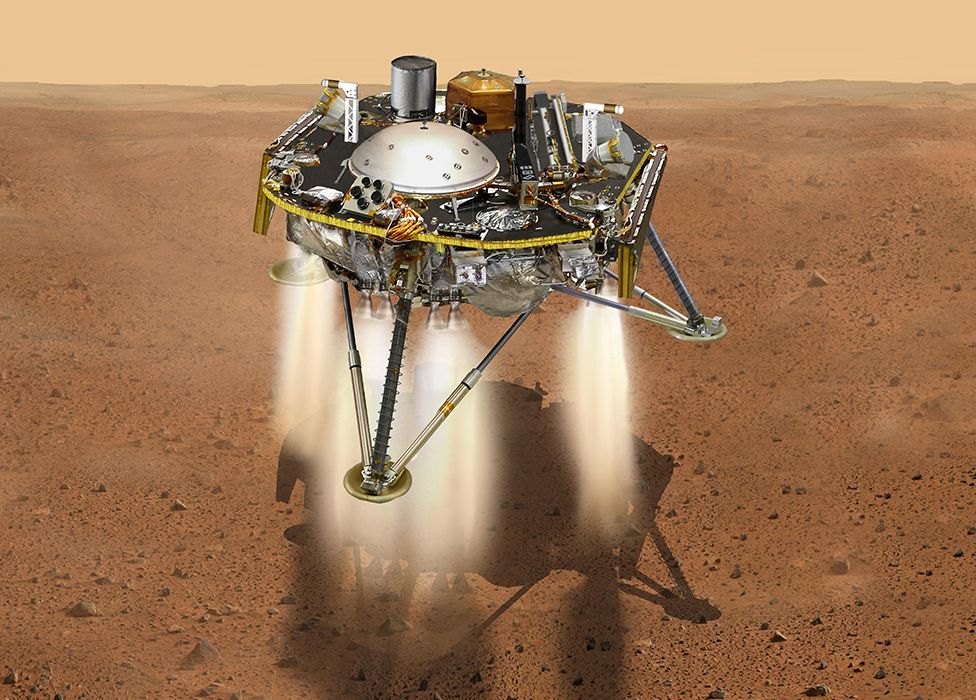
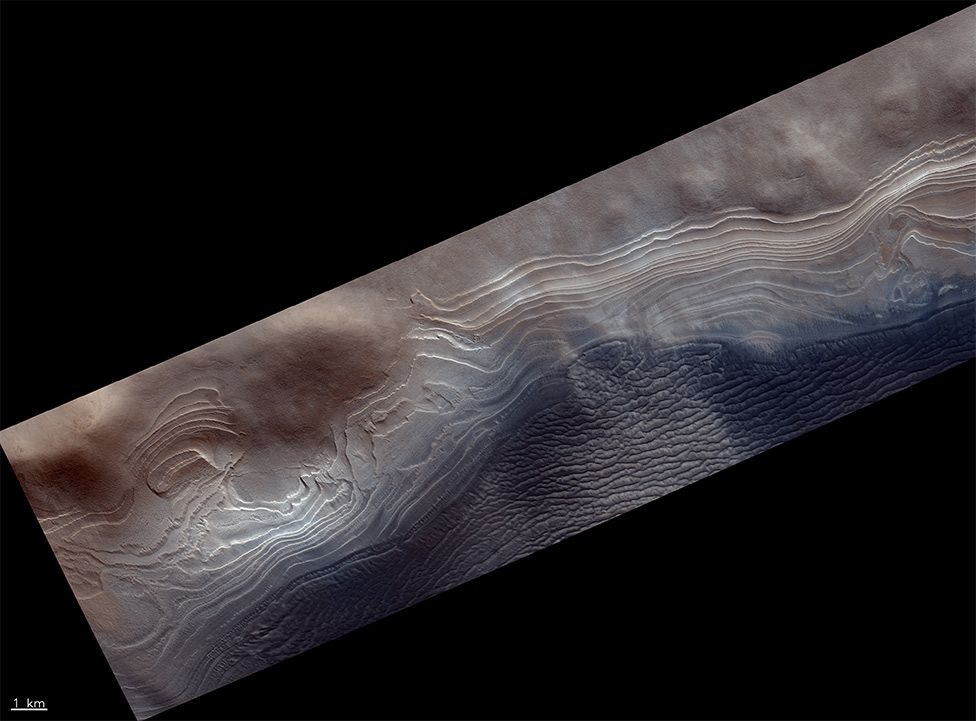
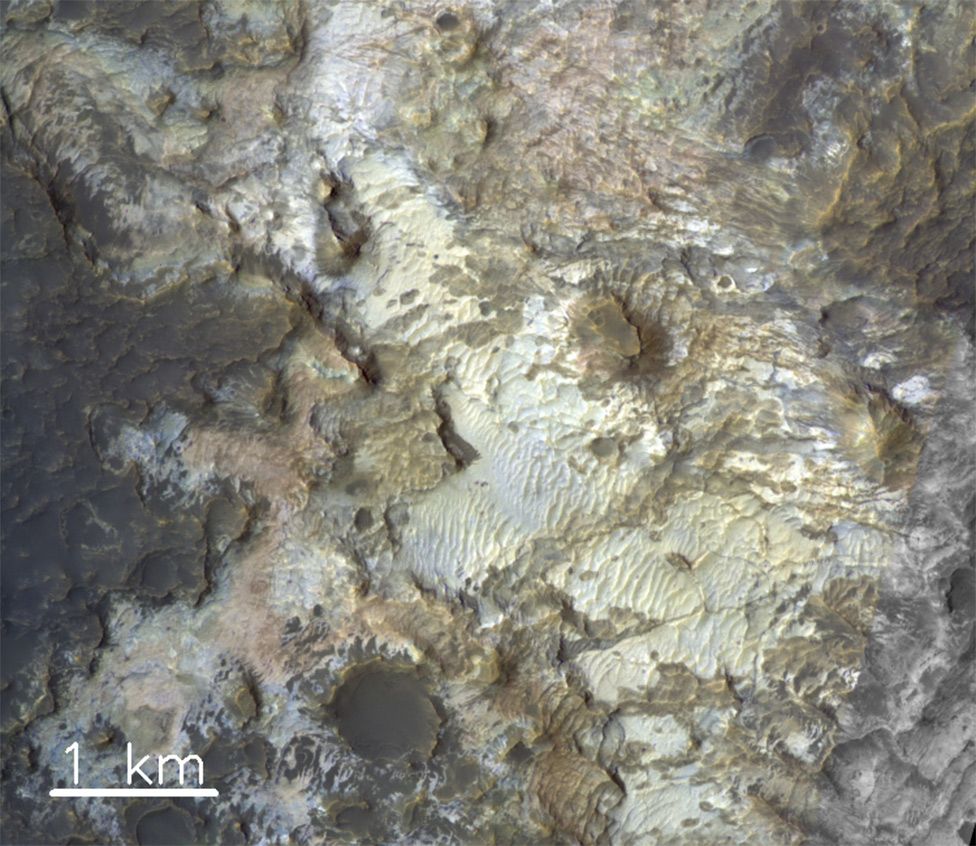
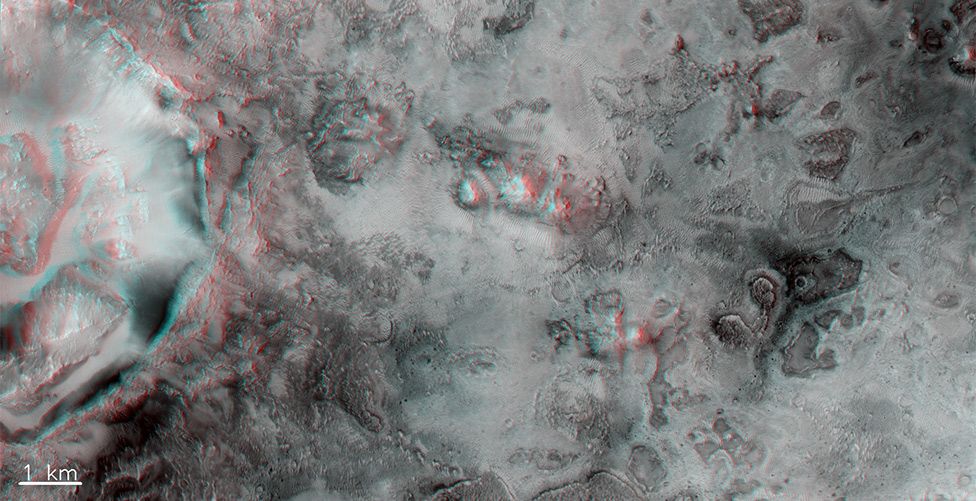
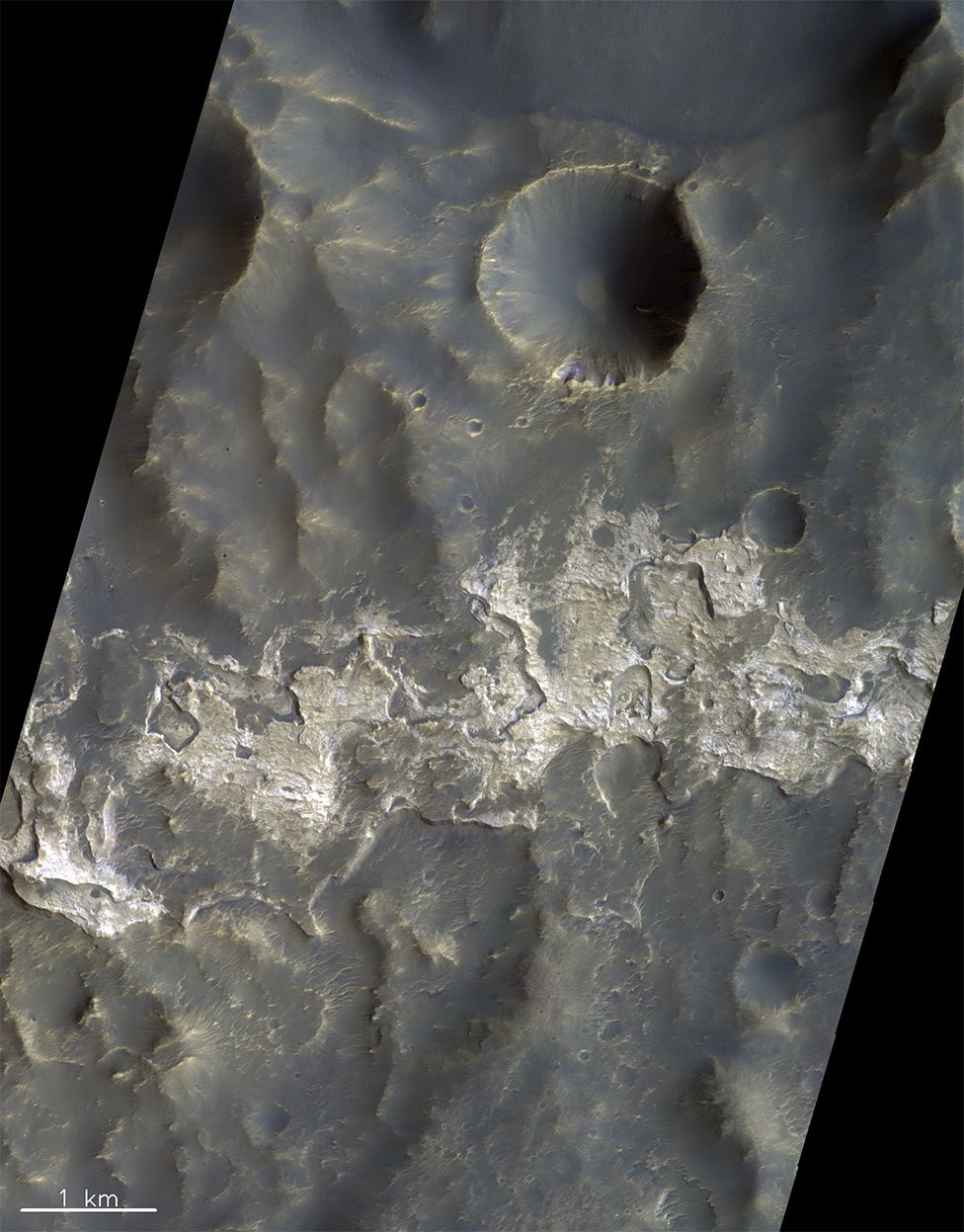



No comments:
Post a Comment
Paste Your Website and Article Link To Create Do-Follow Backlink